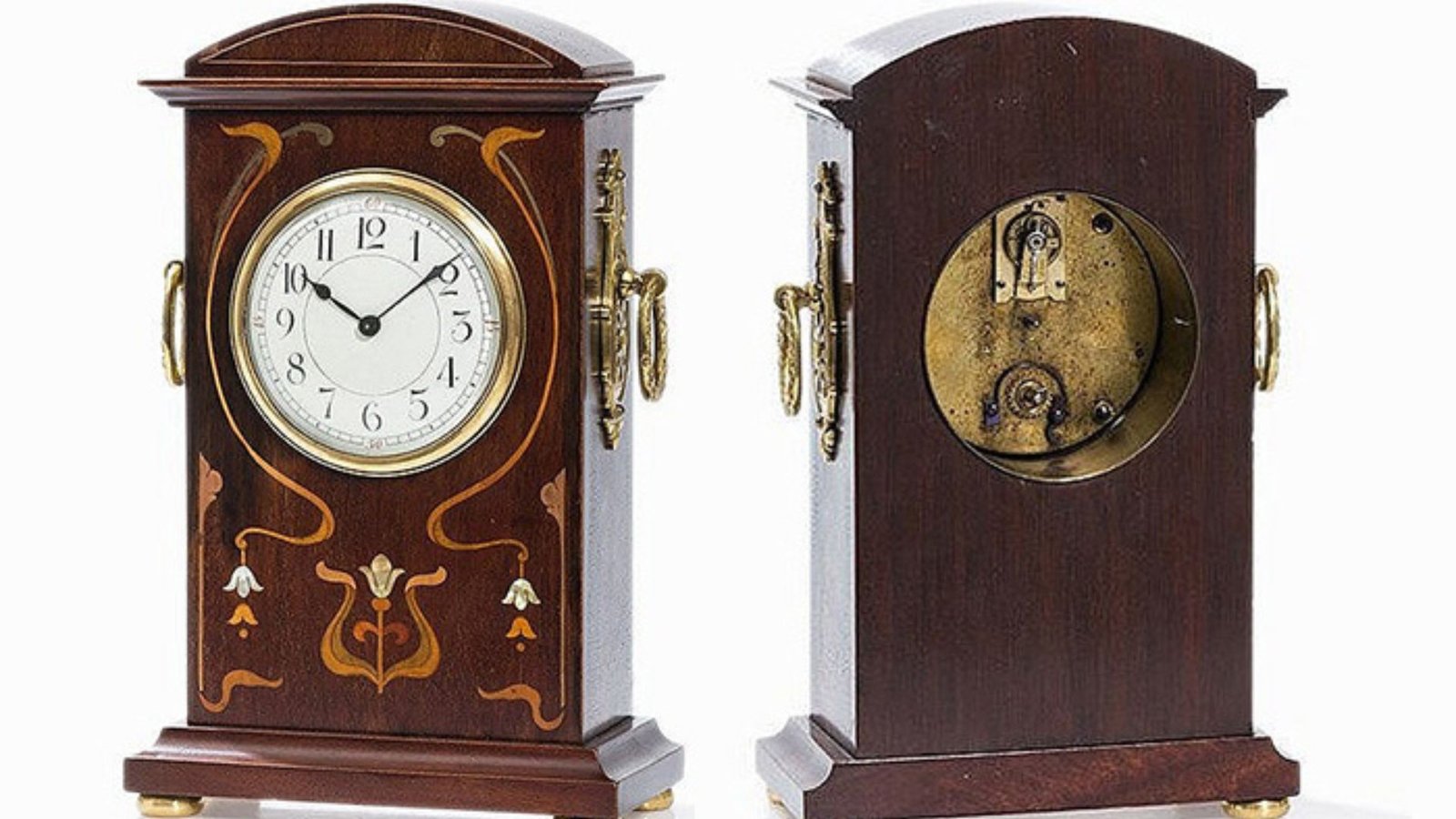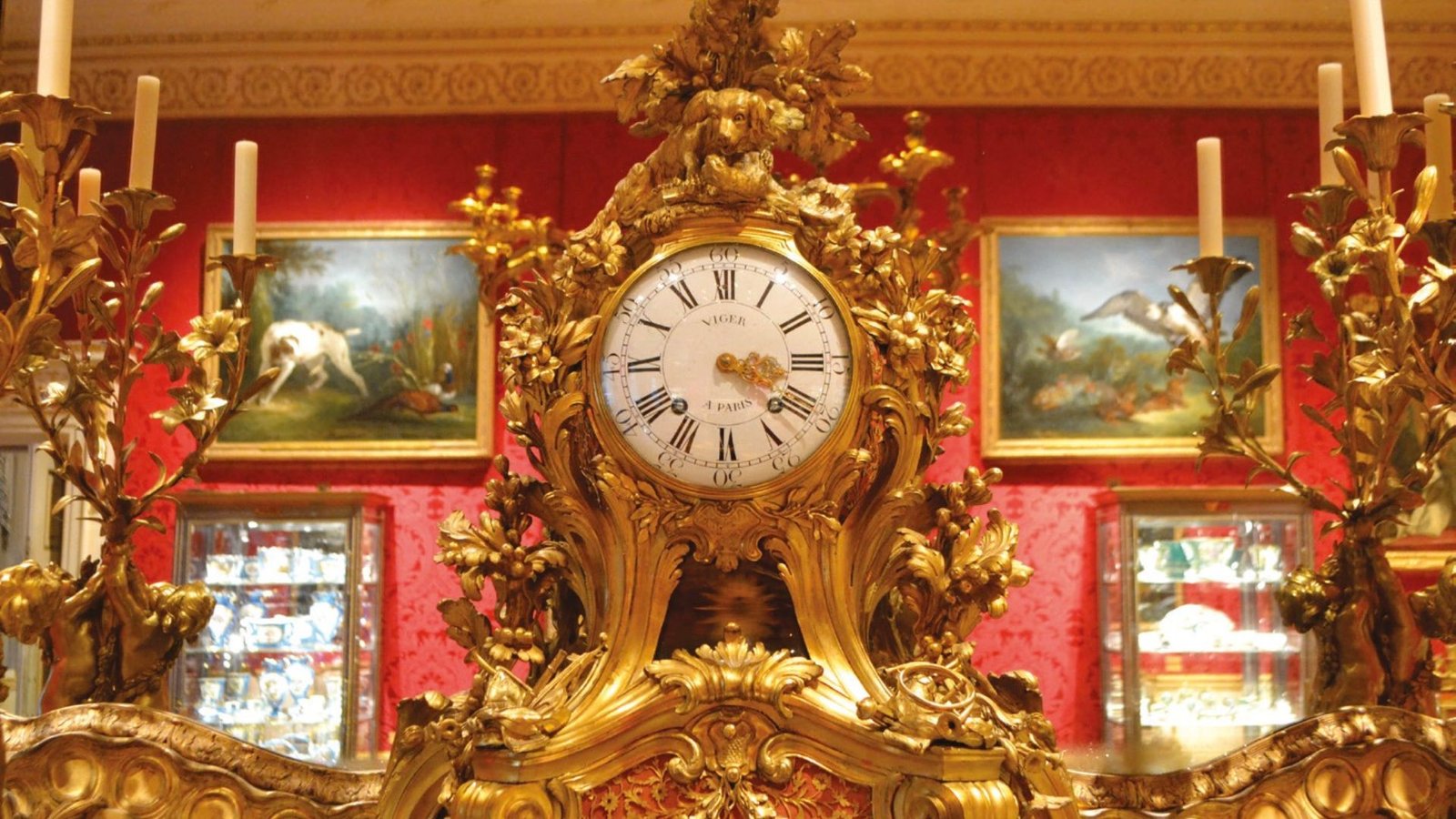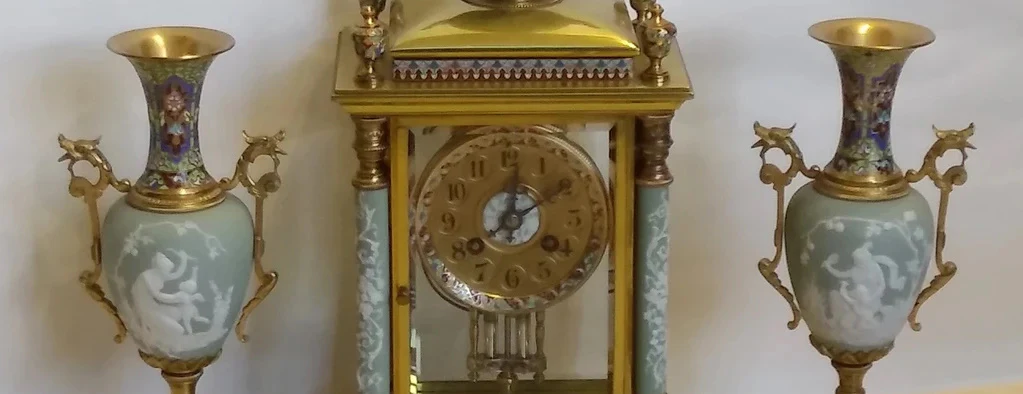Antique clocks are not only valuable timepieces but also pieces of history and art. Collecting these clocks allows enthusiasts to own a part of the craftsmanship from past centuries. Here are five classic antique clock styles to consider adding to your collection.

Mantel Clocks
Mantel clocks are small, elegant clocks designed to sit on a mantelpiece or shelf. They became popular in the 18th and 19th centuries, particularly in France and England.
- Key Features: Mantel clocks typically feature detailed carvings, ornate cases made of wood, marble, or brass, and sometimes include decorative elements like cherubs or floral patterns.
- Why Collect?: Mantel clocks are both functional and beautiful, making them an excellent decorative piece in any home. Their relatively compact size makes them easy to display.
Grandfather Clocks
Grandfather clocks, also known as longcase clocks, are tall, standing timepieces with pendulums. These clocks are known for their stately appearance and impressive height, often reaching 6 to 8 feet tall.
- Key Features: Grandfather clocks typically have long pendulums that swing in a slow, rhythmic motion. The cases are often made of oak, mahogany, or walnut, and many feature intricate designs and glass windows showcasing the pendulum.
- Why Collect?: Grandfather clocks add a sense of grandeur to any room and are known for their deep chimes. They are highly sought after by collectors due to their craftsmanship and historical significance.
Cuckoo Clocks
Cuckoo clocks originated in the Black Forest region of Germany and are known for their whimsical, mechanical features. They became widely popular in the 18th century and remain a favorite among collectors today.
- Key Features: Cuckoo clocks are often made of carved wood, featuring intricate designs such as birds, animals, or forest scenes. They are famous for the small cuckoo bird that emerges on the hour, accompanied by a distinctive “cuckoo” sound.
- Why Collect?: Cuckoo clocks are fun, interactive pieces with a long tradition of craftsmanship. Their unique mechanical movements and charming designs make them a favorite for both beginner and experienced collectors.
Bracket Clocks
Bracket clocks, sometimes referred to as table clocks, are small timepieces that were originally designed to sit on a wall bracket. These clocks became popular in England during the 17th and 18th centuries.
- Key Features: Bracket clocks are typically made of wood, often featuring intricate inlays or gilding. They often have striking mechanisms that chime on the hour or quarter-hour, and many come with carrying handles.
- Why Collect?: Bracket clocks are known for their elegant designs and portability. They are often highly decorative, making them both a collector’s item and a statement piece in any room.
Carriage Clocks
Carriage clocks were first developed in the 19th century for use by travelers. These portable clocks feature a compact design and were often taken on journeys to keep track of time while on the road.
- Key Features: Carriage clocks are small and typically housed in brass or gilt metal cases with glass panels. Many feature a handle on top, making them easy to carry. Their movements are often highly precise, and they can include additional features like alarm functions.
- Why Collect?: Carriage clocks are both practical and beautiful. Their portability, combined with their high level of craftsmanship, makes them a popular choice among collectors.
Conclusion
Collecting antique clocks allows enthusiasts to appreciate the rich history and craftsmanship behind these timepieces. Whether you’re drawn to the intricate carvings of a mantel clock or the grandeur of a grandfather clock, these styles offer a unique glimpse into the past and are perfect for any collection.





Just browsing tara777 and there’s plenty to see. Might be your kind of thing too! Take a look at it here at at tara777.
Oi, pessoal! Alguém mais tá curtindo a Vera Bet BR? Tô achando as odds boas e a plataforma fácil de usar. Bora testar e ver se a sorte tá do nosso lado! Confere aqui: vera bet br
Die Einzahlung erfolgt mittels einer Karte, die Sie online oder bei autorisierten Verkaufstellen erwerben können. Somit überwiegen die Vorteile, die die Prepaid Zahlungsmethode
zu bieten hat. Obwohl keine direkte Paysafe Auszahlungen möglich sind, haben Sie jedoch die Option Ihre Gewinne mit alternativen Zahlungsmitteln auszahlen zu lassen. Die deutsche Lizenz sorgt für Transparenz im Umgang mit Ein- und Gewinnzahlungen und bietet
Ihnen die nötige Sicherheit bei Ihren Transaktionen. Sie fragen Sich ob Sie mit Ihren Paysafe
Einzahlungen von speziellen Casino Bonus Angeboten profitieren können? Um bei Ihren Paysafe
Einzahlungen von noch mehr Komfort zu profitieren können Sie ein myPaysafecard
Konto erstellen.
Fällt euer Guthaben bei der Paysafecard auf weniger als 10 Euro, könnt ihr die
Wertkarte mit einer anderen Prepaid-Karte von Paysafe kombinieren. Mit den Paysafecard Einzahlungen von 10 Euro oder mehr
stehen euch verschiedene Bonusangebote in den Casinos zur Verfügung.
Die Wertkarte ermöglicht euch zudem eine optimale Kontrolle eures Spielbudgets, ist in den Online Casinos weit verbreitet und für die Aktivierung von Bonusangeboten zugelassen.
References:
https://online-spielhallen.de/ihr-f1-casino-aktionscode-alles-was-sie-wissen-mussen/
Banking is convenient too, with support for major e-wallets and a
wide range of cryptocurrencies, giving players fast deposits
and quick crypto withdrawals when it’s time to cash out. Start your gaming journey at Spinight with a generous
welcome package combining up to $3,750 in bonus funds and 250 free spins for new players.
With extensive game variety, active promotions,
and a clean interface, Slotoro appeals to players who want everything in one place and don’t mind navigating stricter bonus terms or longer approval times on high-value withdrawals.
The platform operates under a Curaçao license, offers a substantial welcome package, and includes dedicated iOS and Android apps, making it easy to switch between casino play and sports
betting.
Prepared to claim your no deposit bonus and start playing?
Let’s examine these intriguing no deposit bonuses further to understand what sets them apart!
The wagering requirements, game restrictions, and withdrawal limits for RocketPlay no deposit bonuses may vary
depending on the specific promotion. Before you commence spinning those reels with your no deposit bonus, it’s vital to familiarize yourself
with the terms and conditions tied to RocketPlay’s no deposit bonuses.
They range from classic titles with a fixed number of
paylines to modern Megaways slots offering up to 117,469 ways to win on each spin. Online pokies are the most
popular casino game in Australia and come in heaps of themes,
mechanics, and win potential. This prevents you from staking too
high on a single spin or hand, primarily as a form of protection for the casino.
Always check the expiration date, like you do with the
weird-smelling milk carton in your fridge, so you know exactly how long you have to claim and use your bonus.
While pokies often contribute 100%, other games may contribute
much less.
References:
https://blackcoin.co/yukon-gold-casino-a-member-of-casino-rewards/
Additionally, using a model’s outputs might violate copyright,
and the model creator could be accused of vicarious liability
and held responsible for that copyright infringement. When assembling training data, the sourcing of copyrighted works may infringe on the copyright holder’s exclusive right to control reproduction, unless covered by
exceptions in relevant copyright laws. Andrew Ng argued that “it’s a mistake to fall for the doomsday hype on AI—and that regulators who do will only benefit vested interests.” Yann LeCun dismissed doomsday warnings of AI-powered
misinformation and existential threats to the human race.
Juergen Schmidhuber said that in 95% of cases, AI research is about making “human lives longer and healthier and easier.” He added that while AI can be used by bad actors, it “can also be used against the bad actors”.
A May 2023 statement by hundreds of AI scientists, AI industry leaders,
and other public figures demanded that “[m]itigating the risk of extinction from AI should be a global priority”.
We assist with bill resolution options, including insurance negotiations, and payment plans, often reducing charges.
Patient Financial Services advocates for patients, guiding them through
the financial process after a flight. FlyPHI is a mobile and web-based application that
supports PHI Air Medical partners by electronically requesting
a helicopter. We safely transport more than 22,500 patients each year, operating out
of more than 82 bases across the United States. And unlike
others in the industry, we have our own fleet so we can guarantee
a quality medical flight and exceptional care across the board.
Visit our online patient and family center for all the resources and assistance you need to get you through this tough time.
None of us ever expects to be in a situation where an air ambulance is called, but if it does happen, out-of-pocket bills can be
monumental. PHI Air Medical is the leading air ambulance
provider in the United States. Maintenance professionals are required
to release long-range aircraft for each air
ambulance flight and accept the aircraft upon return. As an FAA-certified
Air Carrier with worldwide operating authority, our air ambulance
fleet consists of Part 135 ATP Certified flight crew that are simulator trained annually and are type-specific rated.
References:
https://blackcoin.co/casino-hotels-on-the-gold-coast/